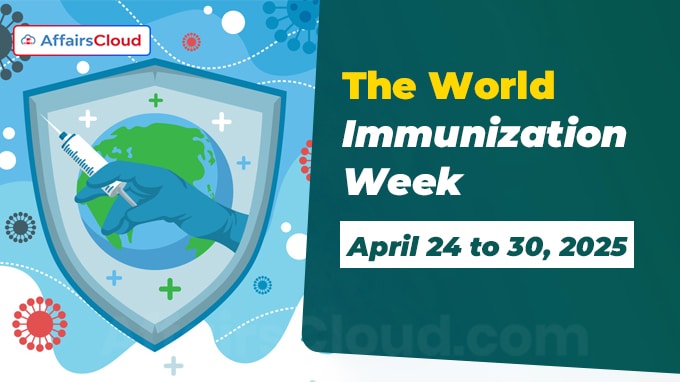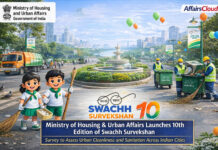
World Immunization Week (WIW) was observed annually across the globe in the last week of April, led by the World Health Organization (WHO) to raise awareness about the critical role of vaccines in preventing diseases and saving lives.
- World Immunization Week 2025 was observed from April 24 to 30, 2025
2025 Theme:
The theme for WIW 2025 is “Immunization for All is Humanly Possible.”
- It emphasizes the collective responsibility to ensure equitable access to vaccines for individuals of all ages, regardless of geographic or socioeconomic barriers.
Background:
i.Initiated in 2003 in the Region of the Americas, WIW expanded to all six WHO regions by 2012, engaging over 180 countries, territories, and areas.
ii.In May 2012, the 65th World Health Assembly (WHA) adopted resolution WHA65.18, urging Member States to designate the last week of April as WIW.
Significance of Immunization
i.Immunization plays a vital role in public health by safeguarding individuals and communities against infectious diseases.
ii.It works by stimulating the immune system to produce antibodies, thereby preventing severe illnesses, reducing complications, and contributing to the control or even eradication of certain diseases.
Achievements Over the Decades
i.Since 1974, vaccines have saved approximately 154 million lives, equating to over 3 million lives annually or six lives every minute.
ii.The measles vaccine alone accounts for 60% of these lives saved.
iii.Vaccination has contributed to a 40% reduction in infant mortality, allowing more children to reach their first birthday and beyond.
iv.Recent advancements have led to the development and deployment of vaccines against diseases like malaria, Human Papillomavirus (HPV), cholera, dengue, meningitis, Respiratory Syncytial Virus (RSV), Ebola, and mpox (monkey pox).
Campaign Objectives for 2025:
The 2025 WIW campaign focuses on:
- Demonstrating that reducing disease and increasing life expectancy is achievable through community-wide immunization efforts.
- Encouraging governments to strengthen immunization programs at both local and national levels to fulfill the promise of universal vaccine access.
Immunization Agenda 2030:
The year 2025 marks the midpoint of the Immunization Agenda 2030, a global strategy aiming for 90% global vaccine coverage and a 50% reduction in zero-dose children.
2025 Events:
On April 24, 2025, coinciding with WIW, Union Minister Jagat Prakash Nadda, Minister of Health and Family Welfare (MoH&FW), virtually launched the National Zero Measles-Rubella Elimination Campaign 2025-26 to eliminate measles and rubella by 2026 through intensified vaccination efforts.
Highlights:
i.Vaccination Coverage: Under the Universal Immunization Programme (UIP), India administers two free Measles-Rubella (MR) vaccine doses at 9–12 months and 16–24 months.
ii.Coverage Statistics (2024-25): First-dose MR vaccination coverage stands at 93.7%, while the second-dose coverage is at 92.2%.
iii.Disease Reduction: In 2024, India recorded a 73% decline in measles cases and a 17% reduction in rubella cases compared to 2023.
- 332 districts have reported zero measles cases and 487 districts have reported zero rubella cases between January 2025 and March 2025.
iv.Award: India received the Measles and Rubella Champion Award (2024) from the Measles and Rubella Partnership (M&RP) for exceptional disease control.
Note: India has set a goal to eliminate Measles and Rubella by 2026.
Role of UIP and U-WIN Platform:
i.UIP: World’s largest vaccination program, covering 2.9 crore pregnant women and 2.6 crore newborns annually against 12 diseases, including polio, diphtheria, and hepatitis B.
ii.Universal Immunization WIN (U-WIN) Digital Platform: Launched to digitize vaccination records, generate certificates, and enable appointment bookings nationwide.
About World Health Organisation (WHO):
Director General (DG) – Dr. Tedros Adhanom Ghebreyesus
Headquarters – Geneva, Switzerland
Established – 1948




